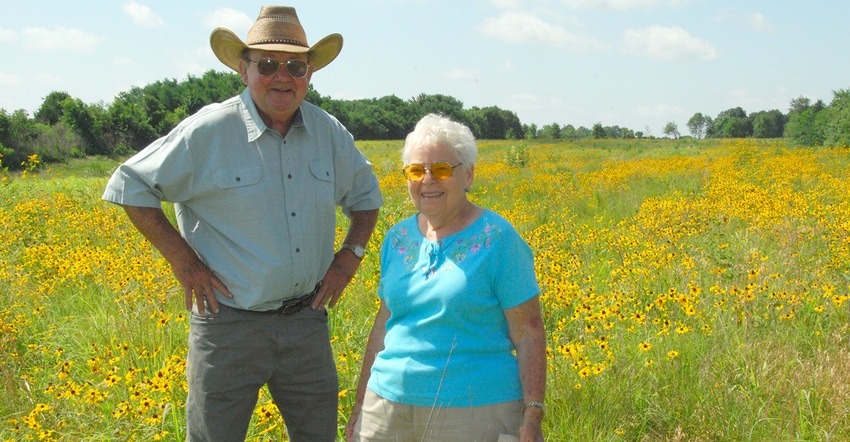November 1, 2018

There is a spot at David and Lou Ellen Honeycutt's homestead where the pollinator habitat stands out like an island in a sea of grazed pastures that dominate the landscape. You can actually hear the difference in the landscape.
"When you step onto a place like theirs, it's just alive with insects," says Rick Rath, Missouri Department of Conservation land conservationist. "If you go across the fence where it's just fescue, there's nothing there. Places like this provide a lot of benefit."
According to USDA, 75% of the world's flowering plants and about 35% of the world's food crops depend on pollinators to reproduce. Scientists estimate that one out of every three bites of food we eat exists because of pollinators such as bees, butterflies, moths, birds, bats, beetles and other insects.
The pollinator habitat also benefits a wide variety of wildlife. Honeycutt says that since he established the pollinator plots, he has observed an increase in deer, quail, turkeys and grassland birds. He is most pleased about the return of quail to the farm.
"When I first moved out here, there were several quail, but over the years they just died out and were gone," Honeycutt says. "After one year of doing this, there are several more."
Making a change
The 80-year-old retired dentist and his wife have been working in partnership with the USDA's Natural Resources Conservation Service and the Missouri Department of Conservation to make their property a haven for pollinators, whether they buzz or silently flutter.
Honeycutt was raised on a dairy farm and won the FFA Dairy Efficiency Production award as a teenager in Arkansas. His dental career brought him and Lou Ellen to Monett in 1971. The couple purchased land in 1976. They built a home where they have lived since 1978.
"At first, we raised steers on the property," Honeycutt says. "I spent that whole first winter feeding those cows and made no money."
Honeycutt switched to selling hay, and later worked out a deal with a local farmer that allowed the farmer to hay the land as long as he took good care of it.
 HABITAT HELP: Help is available from the NRCS and MDC for landowners wanting to increase the bee population on their farms by establishing a pollinator habitat like this field of wildflowers.
HABITAT HELP: Help is available from the NRCS and MDC for landowners wanting to increase the bee population on their farms by establishing a pollinator habitat like this field of wildflowers.

Honeycutt says maintaining the pollinator plantings isn't difficult. He does some spraying, brush hogging and periodic burns. But mostly, he and Lou Ellen enjoy the scenery — and the buzz.
Rahm is the public affairs officer for the USDA-NRCS. He writes from Columbia.
About the Author(s)
You May Also Like




